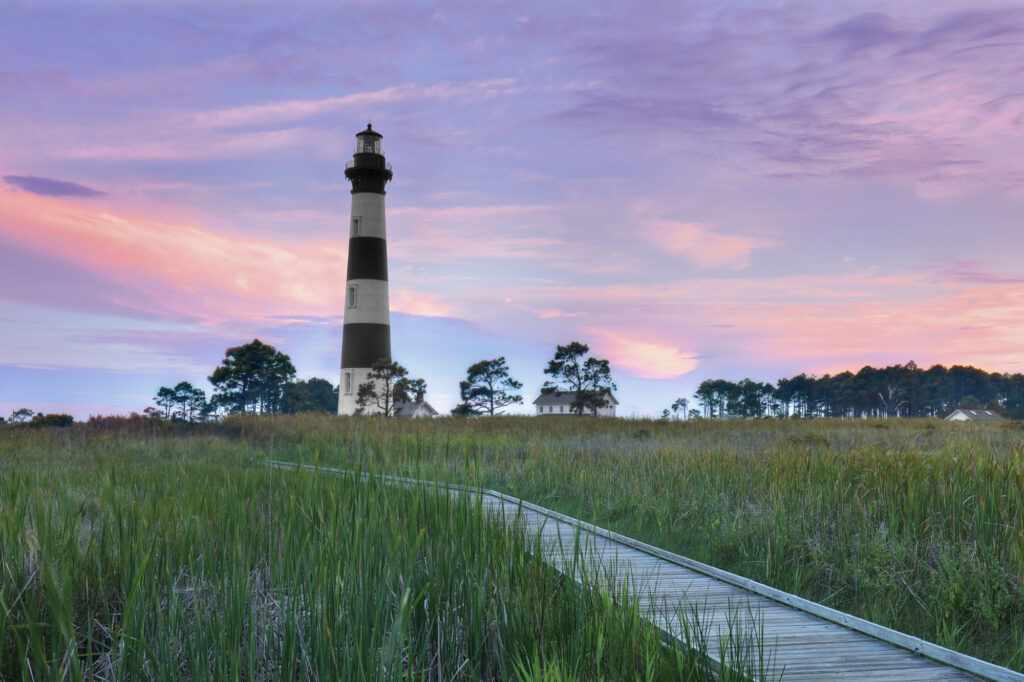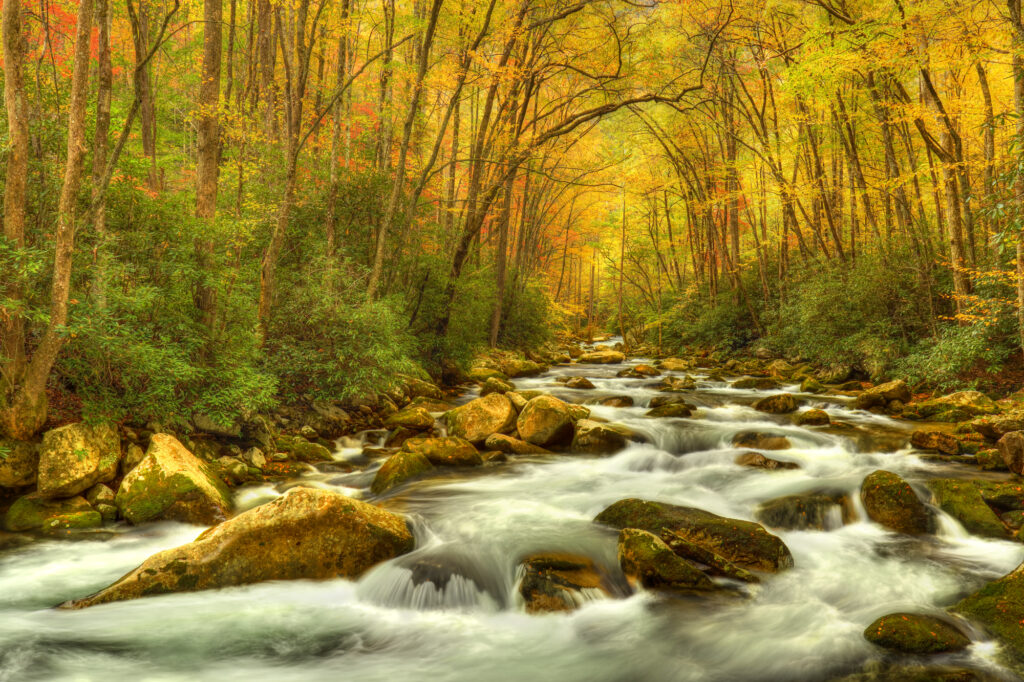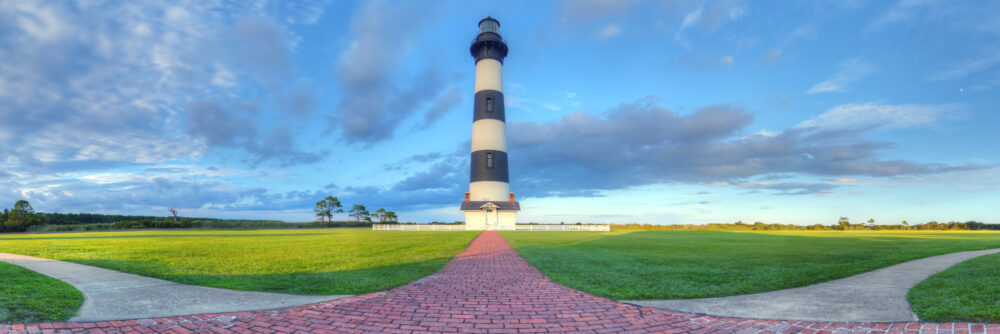Imagine you’re standing before a grand mountain range. You raise your camera, but the photo feels flat, lacking the depth and drama you see with your eyes. What’s missing? Often, it’s the power of composition, specifically leading lines. Good gear is great, but knowing how to compose a shot is more important. Leading lines and vanishing points are powerful compositional tools.
Understanding Leading Lines in Landscape Photography
Lines can make or break a photo. They guide the viewer’s eye and add interest.
What are Leading Lines? Definition and purpose.
Leading lines are lines within a photograph that draw the viewer’s eye to a specific point of interest. They act like visual pathways. These lines can be anything from a road to a fence. Their purpose is to create depth and lead the eye. They bring the viewer deeper into the scene.

See how the photo above uses the wooden walkway to lead the viewer’s eye towards the lighthouse.
How Leading Lines Guide the Viewer’s Eye.
Leading lines aren’t just there to look pretty. They create depth and interest. A line pulls the eye across the image. This creates a journey for the viewer. It guides you through the photo. It makes the image more engaging.
Psychological Impact of Lines.
Lines aren’t just visual tools. They evoke emotion. Straight lines can feel strong. Curved lines feel more peaceful. Diagonal lines create tension. Think about what feeling you want to create. Then, use lines to achieve that.
Identifying Leading Lines in Natural Landscapes
Landscapes offer endless leading lines. You just need to train your eye to see them.
Roads and Paths.
Roads and trails naturally act as leading lines. They snake into the distance. Use them to guide the viewer through the scene. Roads add a sense of journey and direction.
Rivers and Streams.
Water features make great leading lines. Rivers twist and turn across the land. They pull the eye along with them. The reflection of the sky adds depth, too.

Fences and Walls.
Man-made structures can also guide. Fences and walls provide a clear line. They can lead to a barn or a distant house. These lines add structure and interest.
Mastering Vanishing Points for Depth and Dimension
Vanishing points add depth and dimension. Learn how to spot and use them.
What is a Vanishing Point?
A vanishing point is where parallel lines appear to meet in the distance. It’s all about perspective. It’s where things get super small. It creates a sense of depth in your photo.
Creating Depth with Vanishing Points.
Vanishing points trick the eye. They create a sense of distance. An image feels larger. It looks more three-dimensional. This depth enhances the overall impact of your photo.
Single vs. Multiple Vanishing Points.
Some scenes have one vanishing point. Others have several. A single point is simple and direct. Multiple points are more complex. Use multiple when photographing buildings.
Read: Landscape Photography: Lens Hoods
Combining Leading Lines and Vanishing Points
Use leading lines and vanishing points together. This creates even more compelling photos.
Creating a Sense of Scale.
Leading lines lead to the vanishing point. They show how big something is. A road leading to a mountain makes the mountain feel huge. This adds a sense of scale.
Adding Visual Interest.
Lines and points together create dynamism. They make the image pop. The viewer’s eye moves through the scene. This keeps the viewer engaged.
Example: A winding road.
Think of a winding road. It leads to a mountain peak. The peak is the vanishing point. The road is the leading line. They work together perfectly.

Practical Tips for Using Leading Lines and Vanishing Points
Here are some tips for using them in your photos.
Experiment with Different Angles.
Change your perspective. See how it affects the lines. A small shift can make a big difference. Try shooting from high and low angles.
Use a Wide-Angle Lens.
Wide-angle lenses exaggerate perspective. This enhances leading lines. It makes the vanishing point more dramatic. Wide lenses create a sense of vastness.
Pay Attention to Light and Shadow.
Light emphasizes lines. Shadows add depth. Use light to highlight your leading lines. Shadows can add drama.
Common Mistakes to Avoid
Avoid these common pitfalls.
Overuse of Leading Lines.
Too many lines become distracting. Choose one or two strong lines. Don’t clutter the image. Keep it simple.
Ignoring the Rule of Thirds.
Don’t forget the rule of thirds. Place your leading lines strategically. This balances the composition. The rule of thirds is your friend.
Lack of a Clear Subject.
Make sure the lines lead to something important. The subject should be clear. The lines should guide the eye. Don’t let the lines wander aimlessly.
Conclusion
Leading lines and vanishing points are valuable tools. They can transform your photos. Don’t be afraid to try new things. Composition is key to great landscape photography.

